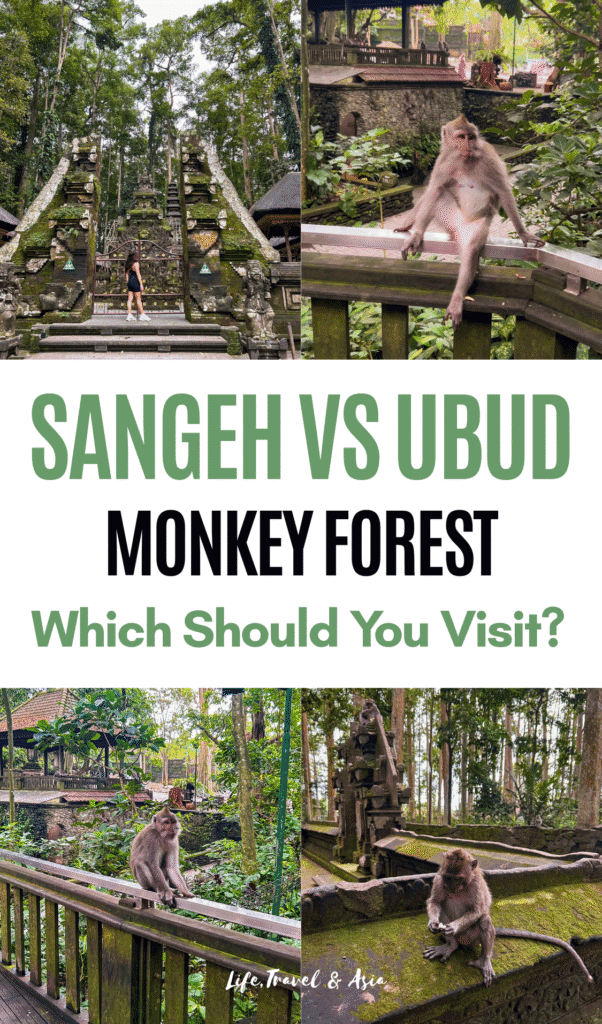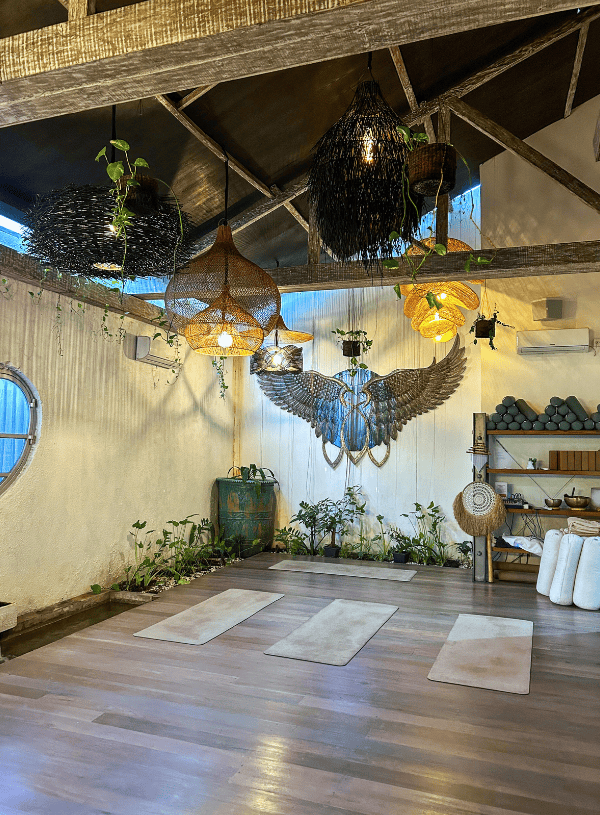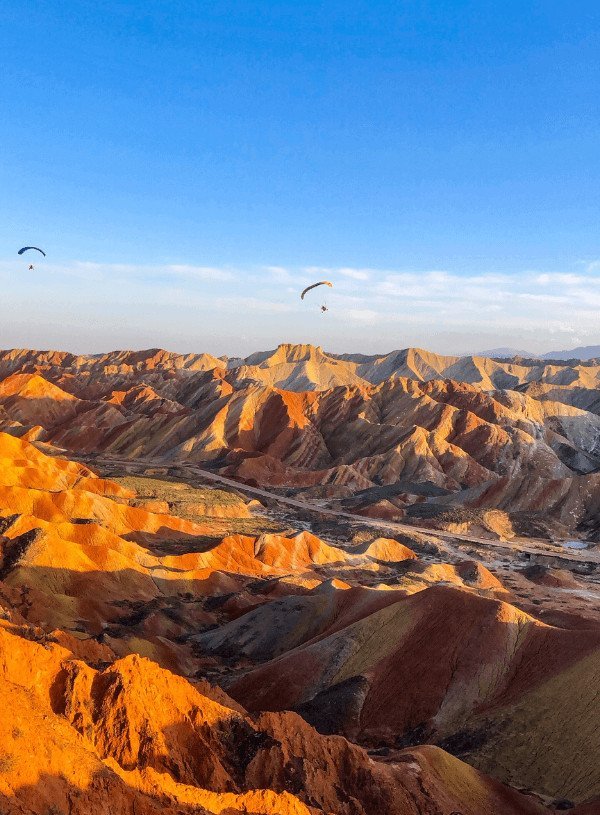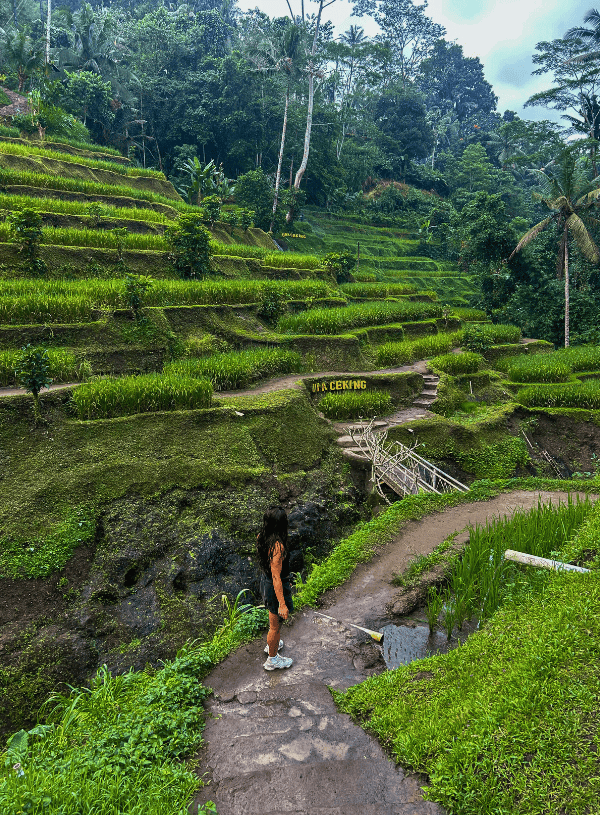Sangeh Monkey Forest vs Ubud Monkey Forest: Which One’s Best for You?
Last Updated on September 18, 2025
As locals say, not all Bali monkeys are equal — and I’d also add that not all monkey forests deliver the same experience.
For some reason, visitors in Bali are always drawn to getting a closer look at the monkeys. They’re funny, a little mischievous, and sometimes way too curious.
I recently visited the Sangeh Monkey Forest, about 5 km from Ubud’s city center, and the experience was completely different from what you’d find at the Sacred Monkey Forest in Ubud. Depending on the type of traveler you are, you may end up pleasantly surprised or a little disappointed.
That’s why I’m writing this guide. If you’re wondering whether to visit Sangeh Monkey Forest vs Ubud Monkey Forest, here’s a detailed comparison to help you decide.
This article may contain affiliate links. This means that if you purchase through one of the links, I may be paid a small commission at no extra cost to you. Thank you for supporting the blog and allowing me to keep sharing meaningful travel experiences with you.
Don’t have time now?📌 Save it for later!
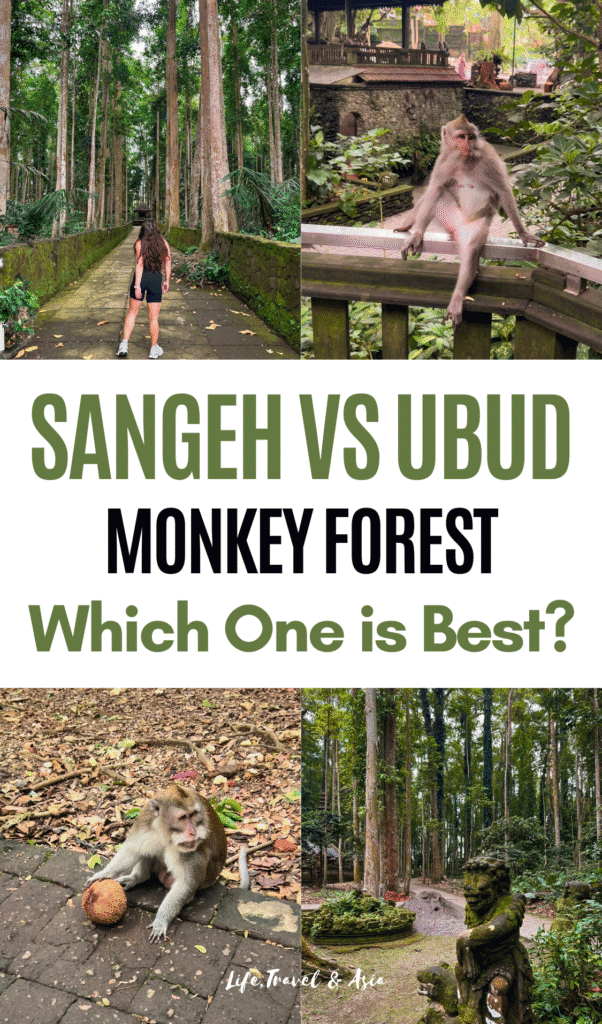
Quick Comparison if You’re in a Rush
| Sangeh Monkey Forest | Ubud Monkey Forest | |
| Location | 30-40 minutes from Ubud by bike | In Ubud Center |
| Dimension | 6 Hectares | 12 Hectares |
| Entrance Fee | IDR 75K with Feeding Basket | IDR 80K (weekday) IDR 100K (weekend) |
| Crowds | Less visited, small crowds | Very popular |
| Atmosphere/Environment | Smaller Forest, quiet atmosphere, close interaction with monkeys | Big forest, theme park vibe, very noisy, monkeys are overstimulated |
Sangeh Monkey Forest: What to Expect From Your Visit
Location & Features
The Sangeh Monkey Forest is located in the small village of Sangeh, about 30-40 minutes from Ubud center.
The forest is small, around 6 hectares, but full of friendly (and very hungry) monkeys. What makes it unique is the atmosphere: giant centuries-old trees rise so tall they almost cover the sky, and right at the center, you’ll find the beautiful Pura Bukit Sari, a 17th-century temple that you can spot through a majestic candi bentar gate.
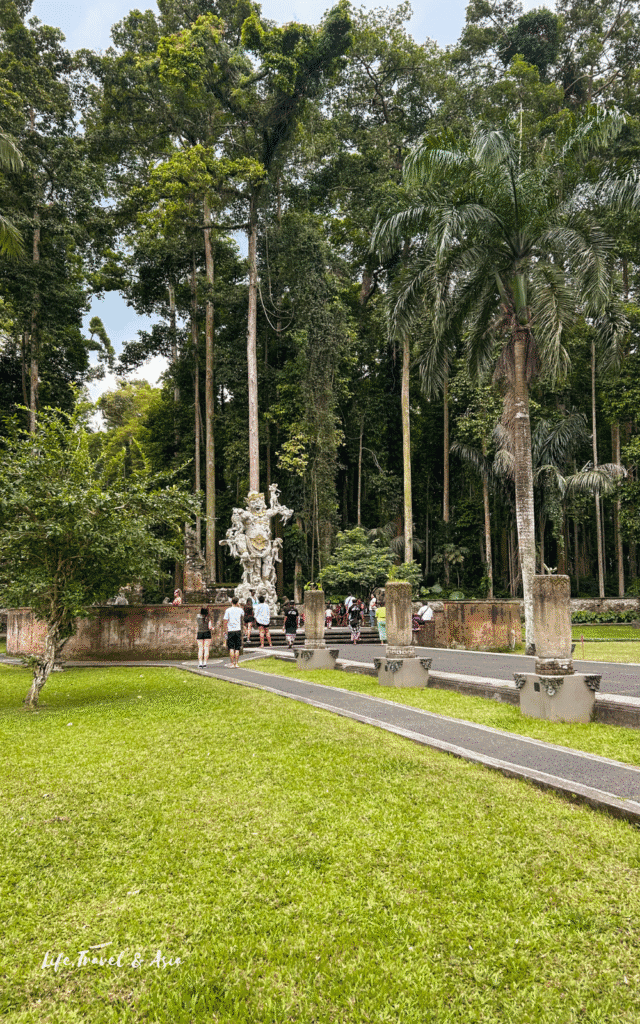
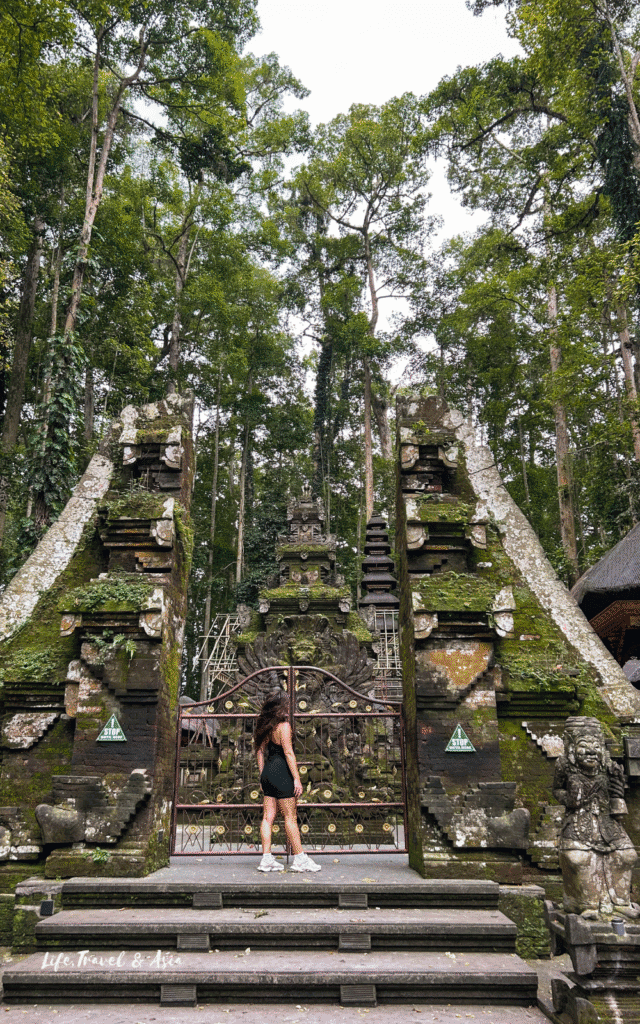
There are also a few tiny shrines scattered around — Pura Melanting, Pura Tirta, Pura Batan Pole, and Pura Anyar — that add to that quiet, spiritual feeling you often get in Bali’s forests.
I’ll be honest: the size of the place left me a little disappointed, especially after seeing the Monkey Forest in Ubud. But being around the monkeys here, and the beauty of the forest itself, even if smaller, made up for it.
How To Get To Sangeh Monkey Forest
From Ubud center, it’s very easy to get to Sangeh. You can take a Grab bike, but keep in mind that getting a ride back might be tricky. My tip is to ask your driver to wait and take you back.
The other option is renting a scooter. It’s cheaper, gives you more freedom, and you can use the trip to explore a bit more of the area if you feel like it.
The Experience & Interaction with the Monkeys
What makes the Sangeh Monkey Forest special, compared to Ubud, is that here the interaction with the monkeys is actually encouraged. With your basic ticket, you get a little basket of food to feed them.
Local caretakers are around the forest to keep an eye on things and step in if a monkey gets too excited. Overall, the monkeys here are curious (and yes, hungry) but way calmer and less overstimulated than in the Ubud Monkey Forest.
You won’t find monkeys trained to pose for photos, which means they’re less used to tourists. That makes the experience more authentic.
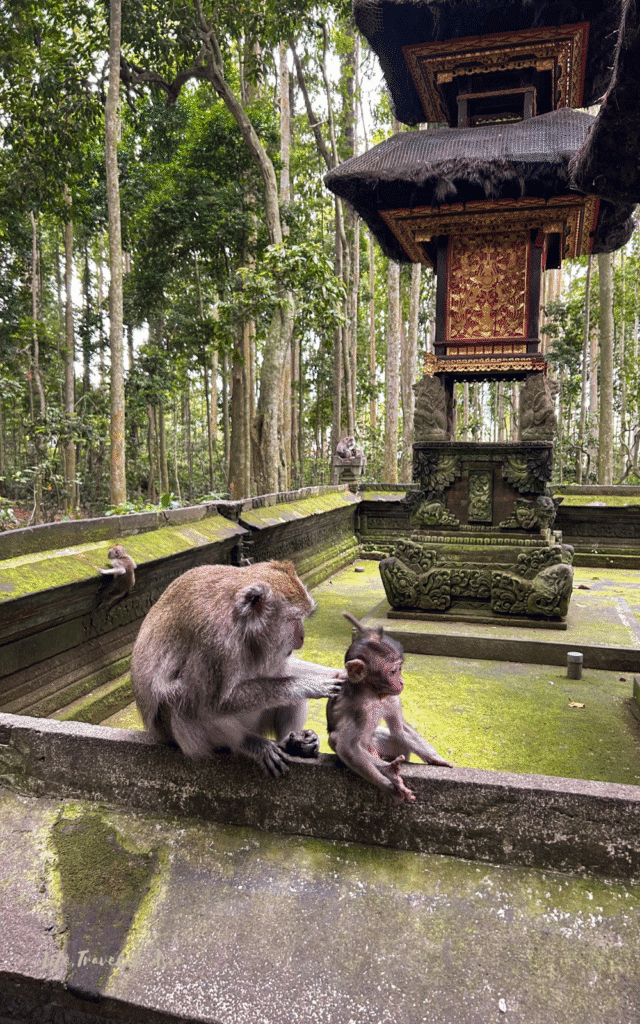
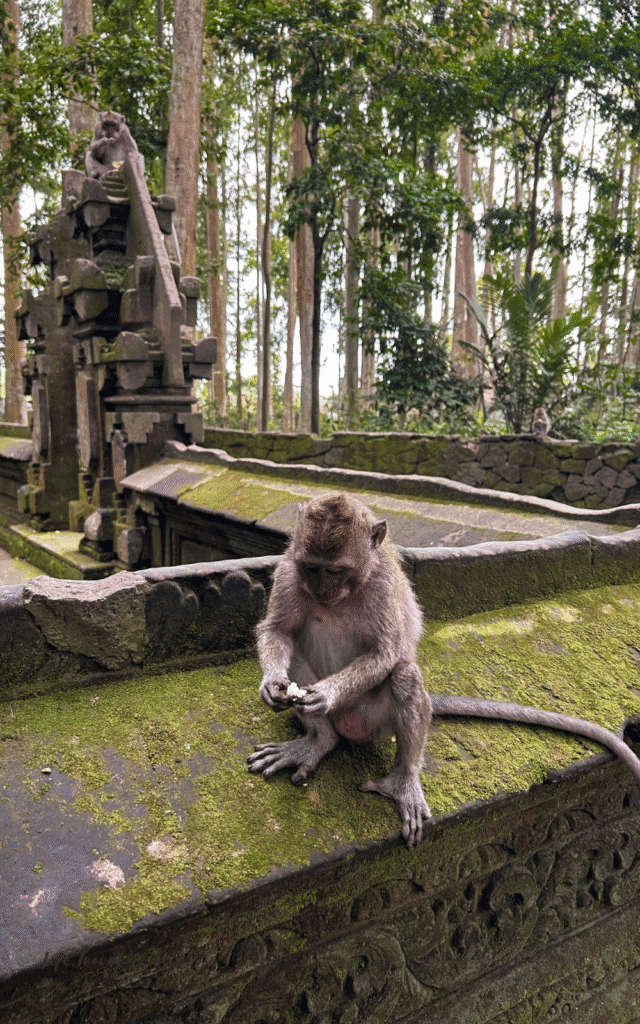
Of course, that doesn’t mean they won’t try to snatch something (one stole my mom’s mosquito spray…) or chase you if you stare them down for too long. However, the overall feeling is that the monkeys live freely in their natural habitat, and we, the visitors, are their guests.
Feeding them is definitely the highlight, and it’s not at all a dangerous activity. You can hold a bit of food in your hand, and the monkey will gently take it and eat it right away. Just keep an eye on your basket, though — a monkey can easily jump right in if you’re distracted.
Sangeh Monkey Forest: Opening Hours & Entrance Fee
The Sangeh Monkey Forest is open from 8:00 a.m. to 5:00 p.m. It’s one of those places you can visit at any time since it never really gets crowded. Still, if you’d like to have the site almost to yourself, aim for around 8:30 or 9 am. I arrived around 10, and while there were a few people, it was nothing compared to the crowds at the Ubud Monkey Forest.
The ticket to enter Sangeh Monkey Forest is also cheaper than the one for Ubud. It’s IDR 75,000 per person (about $4.50), and it includes a basket of food to feed the monkeys.
There’s also the option to feed the fish in the ponds around the forest. That ticket is slightly more expensive, but I opted for the basic one that included food for the monkeys.
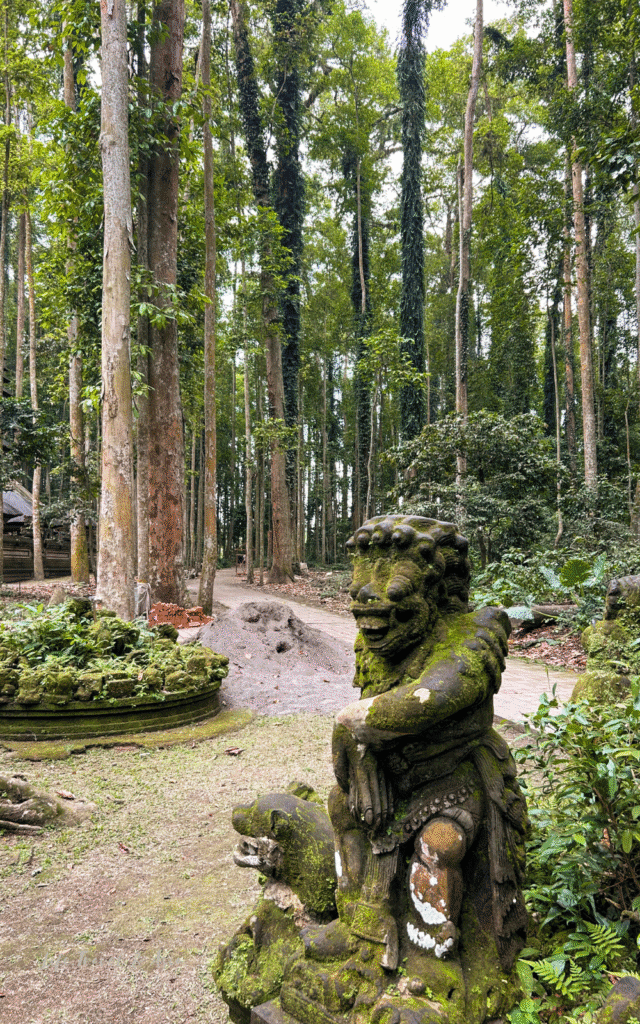
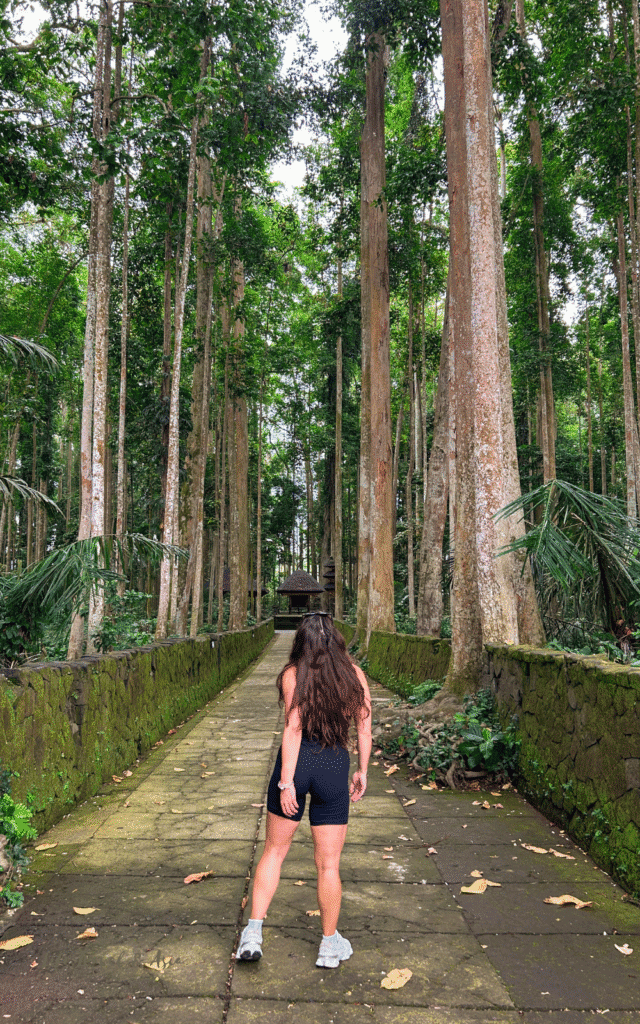
Crowds & Atmosphere
It goes without saying that the Sangeh Monkey Forest is much less visited than Ubud’s. There are very few tours that stop here, and you definitely won’t find big buses of tourists filling the parking lot at the entrance.
After visiting both, I can say that the experience here feels much quieter: no kids are screaming or running from the monkeys, and as a result, the monkeys themselves are calmer and more at ease.
Rewatching my video, what struck me the most was the silence surrounding the forest. It honestly feels like stepping into a real forest inhabited by monkeys, rather than a theme park transformed for tourists.
Ubud Monkey Forest: What to Expect From Your Visit
Locations & Features
Unlike Sangeh Monkey Forest, Ubud’s is located right in the heart of the city, making it extremely easy to reach. If you’re staying on Jl. Bisma or Jl. Monkey Forest, you can even walk there.
The forest is about twice the size of Sangeh, 12 hectares, so your visit will feel much longer if you plan to explore more of the grounds.
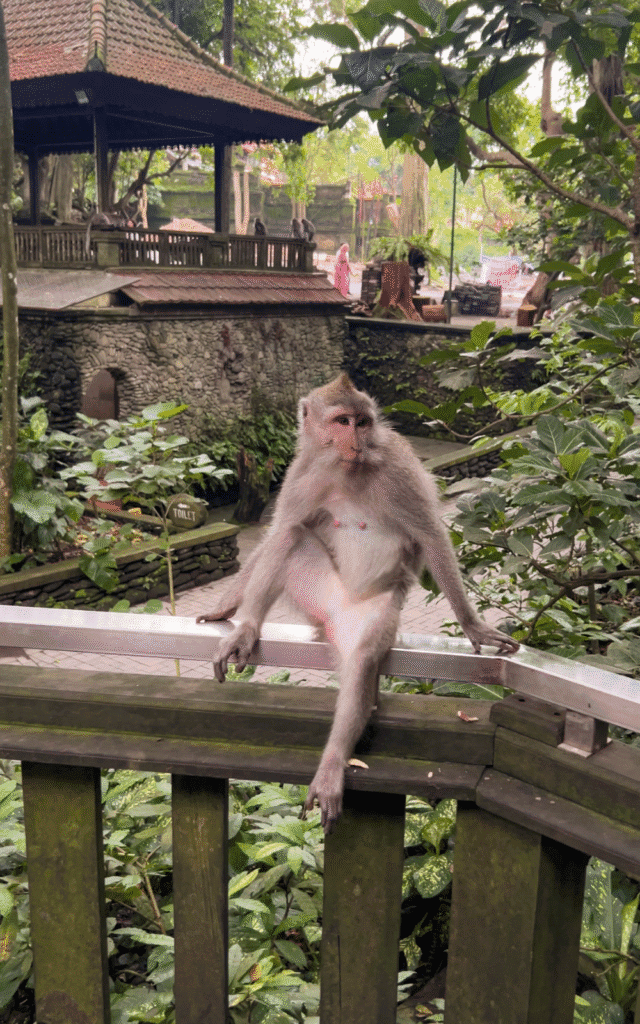
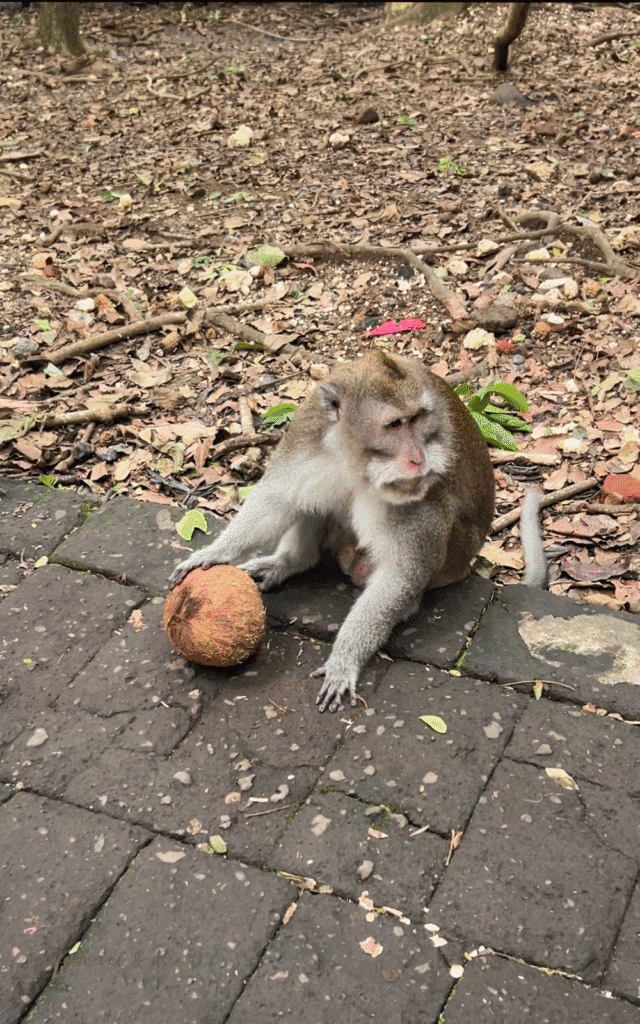
The real highlight here is the forest itself: a thick, dense rainforest with towering, centuries-old trees stretching for kilometers, featuring sacred Hindu temples scattered throughout, such as Pura Pura Dalem Agung Padangtegal, Pura Beji, and Pura Prajapati.
For me, the beauty of the forest, along with its size and features, is the main reason someone might prefer Ubud’s Monkey Forest. Here you can truly lose yourself — wandering among giant trees, catching glimpses of sacred temples, and feeling surrounded by nature.
The Experience and Interaction with the Monkeys
Unfortunately, Ubud’s Monkey Forest is not as quiet as Sangeh. As soon as you reach the entrance, you get that “theme park” feeling — and the monkeys, especially those hanging around the gates, confirm it. They’re so used to tourists that they almost pose for photos, and their behavior doesn’t feel very natural at all.
Unlike in Sangeh, there’s no real way to interact with the monkeys safely here. Feeding them is discouraged, and you’re advised to keep an eye on your things since they’re quick to grab anything that looks interesting.
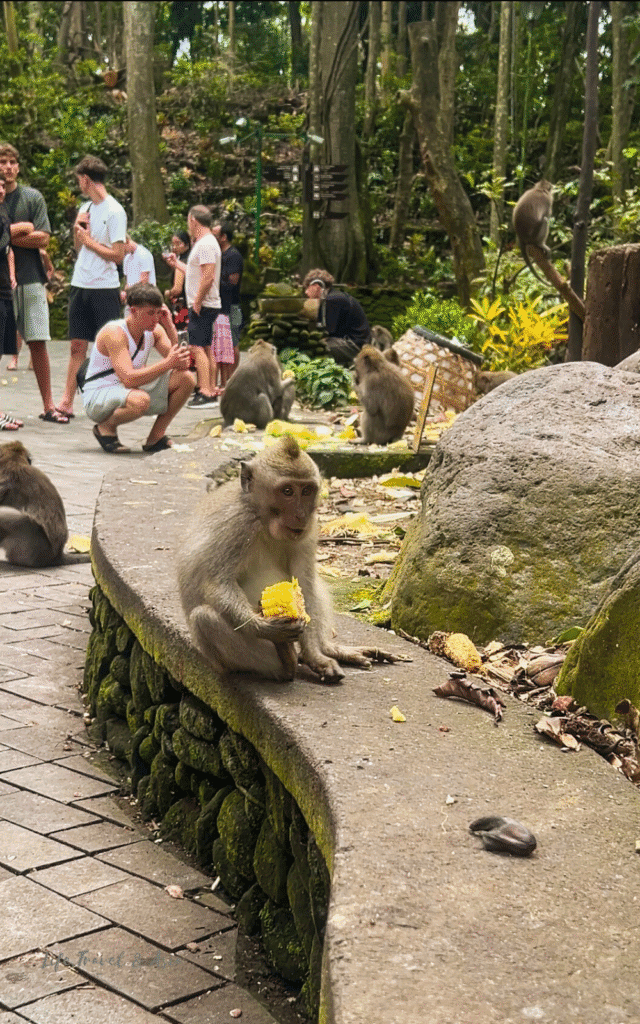
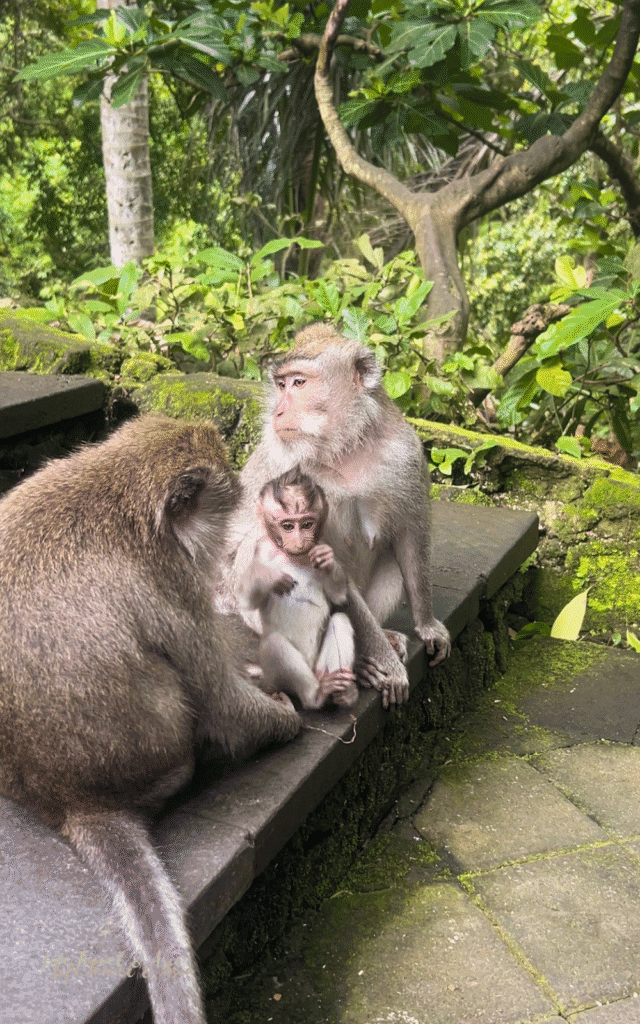
That said, if you wander deeper into the forest, the vibe changes. The monkeys’ behavior feels much more natural, and you can watch funny family scenes, little ones playing, or even a monkey trying to crack open a coconut. You’ll also find fewer crowds once you move away from the entrance, which makes the whole experience much more enjoyable.
Ubud Monkey Forest: Opening Hours & Entrance Fee
The Ubud Monkey Forest is open daily from 8 am to 6 pm. If you want to enjoy it with a quieter atmosphere, the earlier you go, the better. Thanks to the forest’s size, the crowds spread out quite well — especially if you head further in — so it never feels unbearable.
Ticket prices are IDR 80,000 per adult on weekdays and IDR 100,000 on weekends.
Sangeh Monkey Forest vs Ubud Monkey Forest: Which One Should You Choose?
If you’re looking to enjoy nature and wander through a sacred, centuries-old forest, then Ubud’s Monkey Forest is the one for you.
Since interaction with the monkeys isn’t encouraged, the real highlight here is the forest itself. You can easily spend a couple of hours exploring the grounds and getting lost among the trees. It’s also ideal if you’re short on time and just want to squeeze a monkey experience into your itinerary.
On the other hand, if what you’re after is closer interaction with the monkeys, a calmer vibe, and you’re less focused on the natural features of the forest, then Sangeh is your best bet. The visit is shorter compared to Ubud’s, but it’s a great way to fill half a day in your Ubud itinerary.
Best Tours With Sangeh Monkey Forest
While almost every tour includes Ubud’s Monkey Forest, very few include Sangeh. Below are some tours I think are special and worth considering if you’d like to see more of Bali.
North Bali Tour with Sangeh Monkey Forest: This tour includes pickup from Ubud and takes you to some of the most beautiful spots in North Bali: the stunning Banyumala Waterfall, the floating Ulun Danu Beratan Temple, and it wraps up with a visit to Sangeh Monkey Forest. Check out the full list of stops in the link above to see if it’s the right one for you.
Nature & Temples Tour: With this tour, you can choose between five different itineraries. The first one actually starts with a visit to Sangeh Monkey Forest, followed by some of the most enchanting sights in North Bali, including Nung Nung Waterfall and Pura Ulun Danu Temple.
Spiritual Retreat & Wellness Tour: The third option of this tour includes not only a visit to Sangeh Monkey Forest, but also the nearby Taman Beji Griya Waterfall and Temple. It finishes with sunset at Tanah Lot Temple — the perfect way to end the day.
General Safety Tips When Meeting Monkeys
No matter which forest you’re planning to visit — or even if you randomly meet a monkey somewhere in Bali — there are a few tips to keep in mind. And I can call myself a bit of an expert, since I live right behind Ubud’s Monkey Forest and have monkeys in my garden every day.
- Don’t carry food with you when visiting (except for the basket provided at Sangeh Monkey Forest) — they can smell it even if it’s tucked in your bag.
- Hide your smaller belongings — monkeys are curious, and if they don’t recognize something, they’ll grab it to check if it’s food (they once stole my mom’s mosquito spray and my dad’s lighter).
- Don’t stare at them directly in the eyes.
- Don’t show your teeth — they’ll take it as a threat.
- If a monkey jumps on you, stay calm. Don’t make sudden movements or shout. Just bow down slightly, and they’ll hop off on their own.
And there it is — my honest take on the monkey forests around Ubud. When comparing Sangeh Monkey Forest vs Ubud Monkey Forest, there isn’t one that’s “better” than the other. The choice really comes down to the kind of experience you’re after.
If you’re looking for more off-the-beaten-path sights or activities, make sure to check out my list of the best things to do in and around Ubud. It’s made for all kinds of travelers, so you’ll definitely find your cup of tea there.
Did you find it helpful? 📌 Save it on Pinterest!
